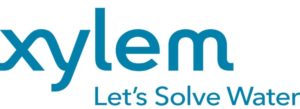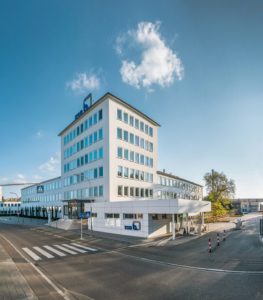Parker Income Up 122 Percent on 16-Percent Increase in Sales
Parker Hannifin Corporation reported a 122-percent increase in net income for the fiscal third quarter ended March 31, 2004. The company earned $107.8 million, or 90 cents per diluted share, on sales of $1.91 billion, compared with net income of $48.7 million, or 42 cents per diluted share, earned on sales of $1.65 billion last year.
As previously announced, the current-quarter results include a one-time, discrete tax benefit of 10 cents per diluted share.
Parker said the earnings improvement was driven by an upsurge in volume throughout the industrial segment, with considerably lower fixed costs from realignment activities and execution of the company's Win Strategy. Organic growth contributed nine percentage points to the 16-percent increase in revenues during the quarter, while currency translation added five points and two points came from acquisitions completed since last year.
"The credit belongs to all of Parker's employees worldwide who endured an unrelenting recession for three years. During that time, they have been implementing our Win Strategy to achieve sustainable margin improvements," said Parker President and CEO Don Washkewicz. "It appears that we may be in the early stages of a broad recovery, and we expect continued growth and increased profitability from strong order momentum." Washkewicz added that the addition of recently acquired Denison is contributing to the company's industrial margins.
Operating income in the North American Industrial businesses was 121-percent higher on a sales increase of 15 percent. The top-line growth was mostly organic, with acquisitions and currency exchange rates adding 2.6 percentage points combined. With the higher volume and lower cost structure, the North American Industrial operating margin improved to 11.1 percent from 5.8 percent last year.
The North American Industrial segment's motion-oriented businesses benefited from strong demand in the mobile original-equipment market (especially agricultural, construction and forestry machinery), as well as in heavy-duty trucks and industrial equipment. In the flow- and process-control businesses, the improved volume was comprised of continued strength in the oil and gas market, as well as a recovery in semiconductors and rebounding demand for process and analytical equipment. The company also noted that its margin mix improved with organic growth in life sciences and microelectronics.
In the International Industrial units, operating income was up 80 percent on a 30-percent sales increase. Favorable currency translation added 16 percent, and volume increased 14 percent, which includes an eight-percent increase in organic revenue, and a six-percent contribution from acquisitions. The international operating margin was 7.9 percent, compared with 5.7 percent last year, reflecting continued strength in the Asia-Pacific region and Latin America, where the company is rapidly gaining market share, and improving performance in Europe from reductions in operating and logistics costs.
Operating income in the company's Climate & Industrial Controls business was 10-percent higher on a 3.4-percent sales increase, with 2.2 percentage points from currency translation. Despite the moderate increase in volume, which came primarily from sales in automotive air conditioning and growth in refrigeration systems, the unit's operating margin improved to 11.8 percent from 11.1 percent. The profitability improvement reflects realignment of facilities and execution of the strategic initiatives in the company's Win Strategy.
Parker Aerospace reported a 4.9-percent sales increase, with a 2.8-percent decline in operating income and an operating margin of 12.6 percent, compared with 13.6 percent last year. With continued softness in the commercial aerospace aftermarket, the margin reflects a revenue mix with a higher proportion of defense business, as well as additional costs associated with pensions and product liability insurance.
In the "Other" segment, operating income increased more than three times, while revenue increased 10.7 percent. The operating margin improved to 5.1 percent from 1.3 percent.
Cash Flow and Inventories
The company continued to post strong cash flow. For the first nine months, cash from operations was $504.5 million, or 9.9 percent of sales. For the same period last year, cash from operations was $326.2 million, which was 6.9 percent of sales.
Ongoing efforts to tighten inventories contributed to the company's strong cash flow results. The company noted that its businesses have continued to reduce inventories throughout the fiscal year, following its trend of more than two years, with the current-year reduction running at almost twice the rate of the prior year.
Year-to-Date Results
Sales in the first nine months of fiscal 2004 were $5.11 billion, compared with $4.75 billion last year. Year-to-date net income was $220.3 million, or $1.85 per diluted share, compared with $147.2 million, or $1.26 per diluted share in fiscal 2003. The current year's results included seven cents per diluted share in realignment costs, while last year's nine-month results included 10 cents per share in realignment costs and an adjustment in equity investment. The increase in the current year-to-date results reflects the strong operating performance by the North American Industrial operations and recently rebounding markets.
Outlook
The company raised its sales and earnings forecasts for the fiscal year ending June 30, indicating it now expects year-over-year sales growth of about 10 percent. The company estimates full-year earnings between $2.55 and $2.65 per diluted share. Factors influencing the forecast include uncertainties regarding raw-material prices; commercial aerospace volume and mix; and sustainability of current order rates.
"We are encouraged by the strength we're seeing in our industrial markets," said Washkewicz. "We are solidly positioned to achieve our growth and profit objectives as embedded in our Win Strategy."
In addition to the information provided herein, Parker advises shareholders to note order trends, for which the company makes a disclosure several business days after the conclusion of each month. This information is available on the company's investor information web site, at www.phstock.com.
With annual sales approaching $7 billion, Parker Hannifin is the world's leading diversified manufacturer of motion and control technologies and systems, providing precision-engineered solutions for a wide variety of commercial, mobile, industrial and aerospace markets. The company employs more than 46,000 people in 44 countries around the world. Parker has increased annual dividends paid to shareholders for 47 consecutive years, which is among the top five longest-running dividend-increase records in the S&P 500. For more information, visit the company's web site.
Forward-looking statements contained in this and other written and oral reports are made based on known events and circumstances at the time of release, and as such, are subject in the future to unforeseen uncertainties and risks. All statements regarding future performance, earnings projections, events or developments are forward-looking statements. It is possible that the future performance and earnings projections of the company and individual segments may differ materially from current expectations, depending on economic conditions within both its industrial and aerospace markets, and the company's ability to achieve anticipated benefits associated with announced realignment activities, strategic initiatives to improve operating margins, and growth initiatives. A change in economic conditions in individual markets may have a particularly volatile effect on segment results. Among the other factors which may affect future performance are: changes in business relationships with and purchases by or from major customers or suppliers, including delays or cancellations in shipments; uncertainties surrounding timing, successful completion or integration of acquisitions; threats associated with and efforts to combat terrorism; competitive market conditions and resulting effects on sales and pricing; increases in raw-material costs that cannot be recovered in product pricing; and global economic factors, including currency exchange rates, difficulties entering new markets and general economic conditions such as interest rates. The company makes these statements as of the date of this disclosure, and undertakes no obligation to update them.
Source: Parker Hannifin Corp





